Driving in Dominican Republic: Everything you need to know before hitting the road
Driving in Dominican Republic
Driving in the Dominican Republic offers a unique way to explore dream beaches, green mountains, hidden gems, and vibrant cities. But before you buckle up, it's essential to know what to expect from the roads, the rules, and the culture. This guide compiles everything you need—from tips to rent car Dominican Republic and driving in Dominican Republic to road safety and local driving habits—so you can self-drive in Dominican Republic with confidence.
Whether you're heading to Santo Domingo, Punta Cana, or the lush highlands of Jarabacoa, here’s everything you need to know about driving around DR.
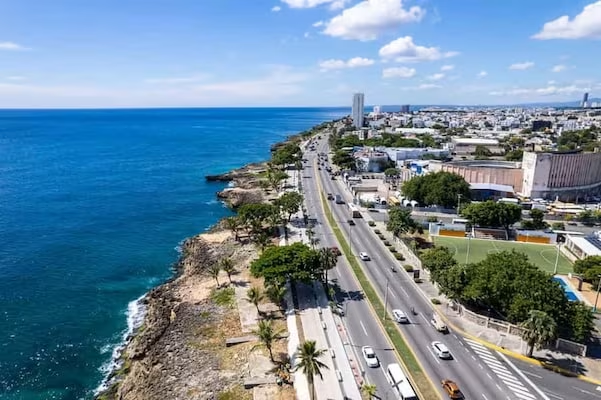
Basic driving regulations in the Dominican Republic
1. Driving regulations
Let’s start with the basics of the highway code. In theory the rules of the road are similar to ours. In practice... let’s say they are more “flexible”.

Side of the road: Right-hand driving.
Speed limits: Urban areas: 40 km/h; highways: 80–100 km/h.
Seatbelts: Mandatory for all passengers.
Mobile use: Prohibited while driving.
Drinking and driving: Zero tolerance. Strictly enforced
While regulations exist, enforcement may vary—locals often interpret the rules loosely. Stay vigilant and cautious.
2. Road conditions and what to expect
The road network is improving, but you’ll find a mix of modern toll highways and rugged rural paths. Driving in Dominican Republic can range from smooth cruising to bumpy adventures.
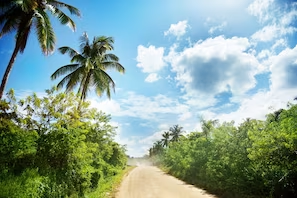
Highways: Good condition, but expect motorbikes, animals, and pedestrians.
Secondary roads: Potholes, sharp turns, and inconsistent signage.
GPS: Essential. Offline maps recommended in rural areas.
Tips to make your driving in the Dominican Republic stress free
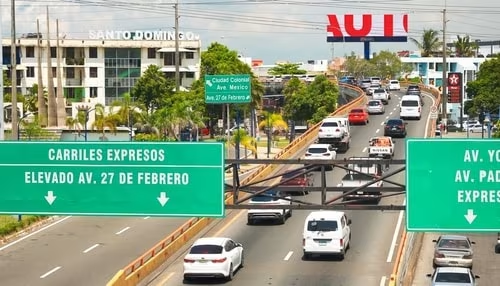
Self-drive in Dominican Republic is absolutely doable, but here are some proven tips for a smooth ride:
1. Defensive driving is key
Always assume the unexpected: cars may change lanes abruptly or ignore traffic lights.
Maintain safe distances.
Use mirrors and your horn generously—communication is often non-verbal.
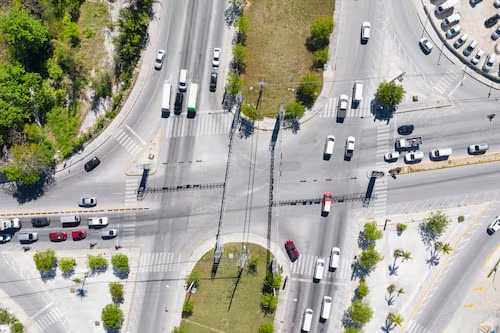
2. Prepare for organized chaos
Stop signs and red lights may be ignored by locals.
Horns are widely used to signal everything—from overtaking to greetings.
Be assertive, but cautious.
3. Avoid night driving
Poor lighting and unmarked obstacles can turn night driving into a hazard.
Many motorbikes have no rear lights.
If you must drive at night, keep speed low and headlights on full.
Alternatives to driving: Public transport
If you don’t want to drive, public transportation is an option:
Taxis and motoconchos: You’ll find a motor anywhere but always negotiate the fare before getting in.
Guaguas: Local minibuses, good for short and cheap trips but often overcrowded.
For full independence and to drive around DR without restrictions, a rental remains the best option.

Common hazards and how to handle them
Driving in the Dominican Republic is not without risks. Be aware of the most common hazards to stay safe and safe for others:
Motorcycles and motoconchos: You’ll see motorcycles and motoconchos between cars, often without respecting the traffic rules. Watch out for their crazy movements.
Animals on the road: Especially in rural areas you’ll see dogs, cows and horses crossing the road. Drive at a moderate speed and always be aware.
Weather conditions: Rain can make the roads very slippery and potholes can fill with water, hiding their depth. Drive careful during and after rain.
Tolls in major cities of the Dominican Republic

In the Dominican Republic many highways have tolls. Here are some key points to keep in mind:
Toll locations: You’ll find toll booths on highways like Autopista Las Americas, Autopista Duarte and Autopista del Coral. Have cash on hand as credit cards are not always accepted.
Cost: Rates vary depending on the road and the vehicle. For standard cars the cost is usually between 60 to 100 Dominican pesos.
Tip: Keep the exact change to speed up the process and avoid any problems. Also respect the lines and signs at the toll booths.
Traffic accidents in the Dominican Republic
One of the main causes of traffic accidents in the Dominican Republic is not respecting the traffic rules. You’ll see drivers going the wrong way on one way streets, which can be very dangerous. Also using the mobile while driving is very common, which increases the risk of accidents. To stay safe always respect the traffic signs and avoid distractions like mobiles while driving.
People in the Dominican Republic speak Spanish so it’s good to learn some basic phrases to communicate, especially in case of an emergency. In case of an accident being able to explain the situation and understand the instructions of the local authorities can be key. Also to prevent theft always lock your vehicle, don’t leave valuables in plain sight and park in secure, well lit areas. By taking these precautions you’ll reduce the risk of traffic accidents and theft and have a safer and more enjoyable driving experience in the Dominican Republic.
Where to rent a car in the Dominican Republic?
Renting a car in the Dominican Republic is a great way to see the country at your own pace and visit places not accessible by public transportation. There are many car rental companies but one of the most recommended is JumboCar. They have a wide range of vehicles from economy to SUV to suit any type of travel and need.
JumboCar has offices in Las Americas Airport and downtown Santo Domingo so it’s very easy to pick up and return the car. Booking in advance through the website not only guarantees the availability of the vehicle you want but also gives you better rates and promotions.
Also JumboCar stands out for its customer service and for offering insurance options to give you peace of mind during your trip. Be sure to read the rental conditions and ask any questions you may have before signing the contract. It’s also a good idea to inspect the car before leaving the pick up location to avoid extra charges for existing damage. With these precautions renting a car in the Dominican Republic can be a smooth and safe experience and you can enjoy your adventure in this lovely country.
Beware of police or Amet bites! Respect the local traffic laws
Driving in the Dominican Republic can be an adventure but it also comes with some challenges. One of the biggest problems for drivers, locals and tourists alike, is to encounter police or Amet agents asking for “mordidas” or bribes. Be prepared and know how to handle these situations to avoid complications.
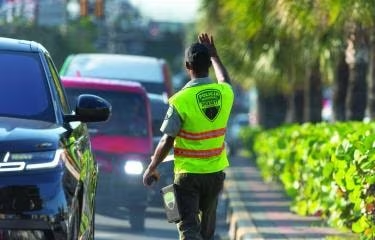
First you must always carry with you all the necessary documents: driver’s license, passport or ID and vehicle papers. When stopped by a traffic officer stay calm and be polite. Ask him what’s the reason for the stop and show the requested documents. Remember that although it’s common for some officers to ask for bribes it’s not legal or acceptable.
To avoid these situations altogether respect the traffic rules especially the speed limits. Common infractions like speeding will attract the attention of the officers. Always keep your speed within the limits: 40 km/h in urban areas and 80-100 km/h on national roads. Also make sure all passengers wear seat belts and don’t use your cell phone while driving. Following these rules will not only help you avoid fines and bribes but also will keep you and your passengers safe.
Is it safe to drive in the Dominican Republic?
Yes, there’s no problem driving here but always be aware and ready to react to other drivers’ crazy behavior.
Is driving in the Dominican Republic really that bad?
It depends. Urban areas can be chaotic, but with preparation and caution, it’s manageable.
Is driving easy in the Dominican Republic?
For experienced drivers, yes. Highways are good, but city driving requires focus and adaptability.
Can tourists drive in the Dominican Republic?
Yes. A valid national driver’s license is enough for short stays (up to 90 days).
Which side of the road do they drive on in the Dominican Republic?
On the right-hand side.
Driving in Dominican Republic lets you uncover hidden beaches, charming villages, and stunning national parks at your own rhythm. It's not just about getting from point A to B—it's about experiencing the country in its most authentic form.
Whether you're visiting for a week or planning a longer stay, a car rental through Jumbo Car allows you to explore driving around DR safely, comfortably, and on your own terms.